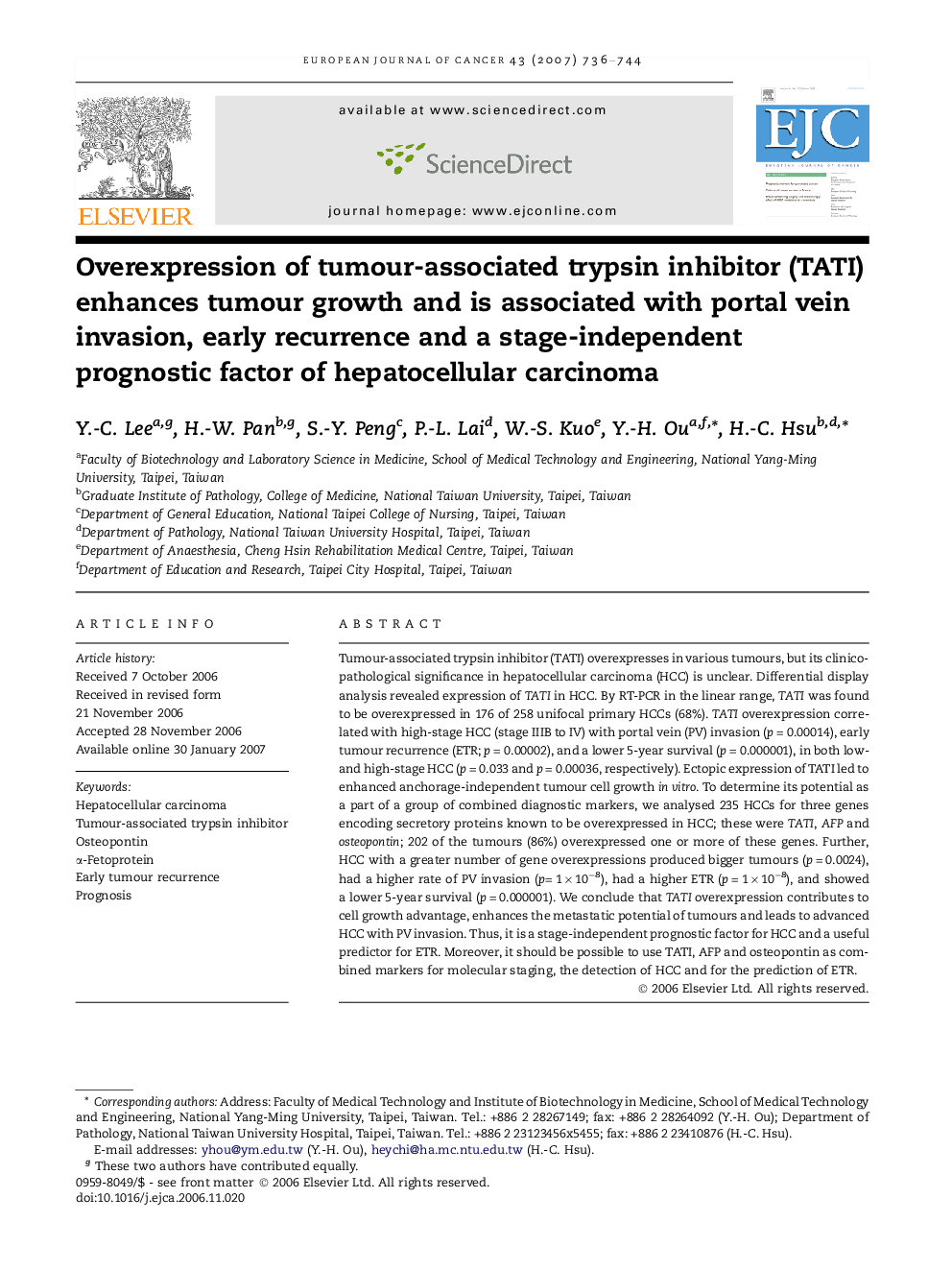| کد مقاله | کد نشریه | سال انتشار | مقاله انگلیسی | نسخه تمام متن |
|---|---|---|---|---|
| 2124646 | 1547271 | 2007 | 9 صفحه PDF | دانلود رایگان |

Tumour-associated trypsin inhibitor (TATI) overexpresses in various tumours, but its clinicopathological significance in hepatocellular carcinoma (HCC) is unclear. Differential display analysis revealed expression of TATI in HCC. By RT-PCR in the linear range, TATI was found to be overexpressed in 176 of 258 unifocal primary HCCs (68%). TATI overexpression correlated with high-stage HCC (stage IIIB to IV) with portal vein (PV) invasion (p = 0.00014), early tumour recurrence (ETR; p = 0.00002), and a lower 5-year survival (p = 0.000001), in both low- and high-stage HCC (p = 0.033 and p = 0.00036, respectively). Ectopic expression of TATI led to enhanced anchorage-independent tumour cell growth in vitro. To determine its potential as a part of a group of combined diagnostic markers, we analysed 235 HCCs for three genes encoding secretory proteins known to be overexpressed in HCC; these were TATI, AFP and osteopontin; 202 of the tumours (86%) overexpressed one or more of these genes. Further, HCC with a greater number of gene overexpressions produced bigger tumours (p = 0.0024), had a higher rate of PV invasion (p= 1 × 10−8), had a higher ETR (p = 1 × 10−8), and showed a lower 5-year survival (p = 0.000001). We conclude that TATI overexpression contributes to cell growth advantage, enhances the metastatic potential of tumours and leads to advanced HCC with PV invasion. Thus, it is a stage-independent prognostic factor for HCC and a useful predictor for ETR. Moreover, it should be possible to use TATI, AFP and osteopontin as combined markers for molecular staging, the detection of HCC and for the prediction of ETR.
Journal: European Journal of Cancer - Volume 43, Issue 4, March 2007, Pages 736–744